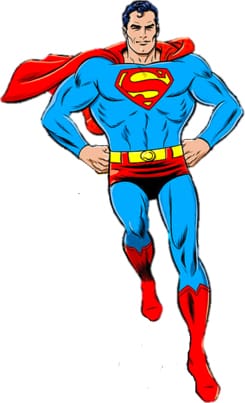akimbo

To stand akimbo is to have one’s hands on one’s hips with the elbows turned outward. The word dates to the fifteenth century, but its origin is unknown. There are, however, a number of competing hypotheses.
Let's start with what we know for sure. The word began as a prepositional phrase, on or in kenebowe. The preposition was subsequently reduced to a. These prepositions can lose its final -n when unstressed, becoming a. That much of the word’s origin is certain. The earliest known use of the term is from the fifteenth century poem The Tale of Beryn:
The hoost made an hidouse cry, in gesolreut be haut,
And set his hond in kenebowe ; he lakkid nevir a faute
(The host made a hideous cry, a shrill howl,
And set his hand akimbo; he never was critical of a fault)
(The phrase in gesolreut be haut is a musical reference, literally meaning a G note above middle C; here it is being used figuratively to mean a shout or howl.)
That explains the a- prefix, but the -kimbo root is more difficult. There are three explanations that have some degree of plausibility, although all three should be treated with skepticism.
The first is that it is a compound of the Anglo-Norman cane (flagon, pitcher) + bow, meaning a hoop or ring. In other words, when standing akimbo one’s arms resemble a jug handle.
The second is that it is from an Old Norse phrase í keng boginn (bent like a bow). Unfortunately, this phrase is unattested and doesn’t actually appear in any extant writing from the period.
The third is that it is a compound of the Middle English keen + bow, alluding to the sharply bent elbows.
While the term started out as on/in kenebowe in the fifteenth century, by the middle of the seventeenth century the on/in had been reduced to a, and the n had shifted to m. The a began to be hyphenated by the early eighteenth century, a-kimbo, and by the early nineteenth, it was simply akimbo.
The meaning of the word expanded too. By the nineteenth century akimbo was being used for the legs as well. And beginning at the end of the eighteenth century, the word was being used more generally to mean askew or disorderly. The word’s use as an adjective is in the last sense, so in 2002 Esquire magazine could write this description of Charlie the Tuna, the mascot of StarKist-brand tuna:
He is still on the can. He is still blue, with mitteny hands and startled, akimbo eyebrows. He is still wearing a pair of Woody Allen-ish eyeglasses and a smart red beret. You remember Charlie: the protohipster with his bebop, his bongos, his Burroughs, and his Baudelaire. Commercial after commercial, Charlie tried to make himself attractive by attaining cultural mastery, only to be told, “Sorry, Charlie: StarKist doesn't want tunas with good taste. StarKist wants tunas that taste good.”

Sources:
Anglo-Norman Dictionary, AND2 Phase 1, 2000–06, s.v. cane1, n.
Furnivall, F. J. and W. G. Stone, eds. The Tale of Beryn. Early English Text Society, extra series 105. London: Kegan Paul, Trench, Trübner, 1909, lines 1837–38, 57. HathiTrust Digital Archive.
Junod, Tom. “Man at His Best: Bizarre Essay of the Month: The Significance of Charlie the Tuna.” Esquire, September 2002, 80. ProQuest
Middle English Dictionary, 4 March 2025, s.v. kene-boue, n.
Oxford English Dictionary Online, September 2012, s.v. akimbo, adv. and adj.; June 2008, s.v. a, prep.1.
Image credits:
Superman: by Michael Allred, DC Comics, 2018. Wikimedia Commons. Fair use of a low-resolution copy to illustrate the topic under discussion.
Charlie the Tuna: StarKist, Co.. 2020. Wikipedia. Fair use of a low-resolution copy to illustrate the topic under discussion.